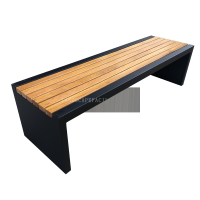Welcome to the website for landscape facilities products and knowledge.
What are the most innovative uses of recycled materials in landscape bar counter construction?
The integration of recycled materials in landscape bar counter construction has evolved from niche sustainability practice to cutting-edge design innovation. Forward-thinking designers and homeowners are transforming waste streams into functional art, creating outdoor entertainment spaces that tell environmental stories while delivering exceptional durability and visual appeal.
Reclaimed shipping container bars represent one of the most dramatic transformations in sustainable design. These corrosion-resistant steel structures, once destined for scrapyards, now form the structural backbone of rugged outdoor bars. Their industrial character pairs exceptionally well with natural landscapes, while their inherent durability withstands harsh weather conditions. The modular nature of containers allows for creative configurations, from single-unit straight bars to L-shaped multi-container installations.
Post-consumer glass finds new life as breathtaking terrazzo-style countertops when combined with binding resins. This innovative application transforms bottles and jars into shimmering surfaces that capture sunlight during daytime and reflect ambient lighting after dark. The material's non-porous nature makes it ideal for outdoor use, resisting moisture and temperature fluctuations while providing easy maintenance. Variations in glass color and size allow for custom patterns ranging from subtle elegance to bold statements.
Reclaimed wood from demolished structures brings historical character to outdoor bars. Barn wood, factory flooring, and even salvaged boat decking offer weathered textures that artificial materials cannot replicate. When properly treated and sealed, these materials develop a beautiful patina over time while maintaining structural integrity. The variation in grain patterns and nail marks creates conversation-starting surfaces that connect outdoor entertainment spaces to historical narratives.
Industrial byproducts are finding surprising applications in counter construction. Fly ash from power plants, when mixed with concrete, creates counters with reduced permeability and increased chemical resistance. Recycled steel slag aggregate produces strikingly beautiful concrete finishes with natural metallic flecks. These materials not only divert industrial waste from landfills but often outperform virgin materials in durability and visual distinctiveness.
Discarded ceramic and porcelain products are being crushed and recomposed into vibrant mosaic surfaces. From broken tiles to damaged sanitaryware, these materials gain new purpose as decorative elements that add color and texture to bar counters. The hardness of vitrified ceramics makes them exceptionally resistant to scratching and staining, while their thermal stability prevents damage from hot servingware placed directly on the surface.
Perhaps most innovatively, recycled plastic lumber is revolutionizing outdoor bar construction. Made from post-consumer and industrial plastic waste, this material offers the workability of wood with unprecedented durability. It won't rot, splinter, or require painting, maintaining its appearance through years of exposure. Advanced manufacturing now produces plastic lumber with realistic wood grain textures and color variations, blurring the line between synthetic and natural materials.
Ocean-recovered plastics represent the frontier of sustainable bar construction. Fishing nets, plastic bottles, and other marine debris are being transformed into weather-resistant building materials that carry powerful environmental messages. These counters often feature visible elements of their origin—flecks of color from former packaging or subtle textures from reprocessed fishing gear—creating tangible connections to environmental conservation efforts.
The integration of these materials frequently combines technical performance with aesthetic innovation. For instance, glass-reinforced concrete counters incorporating recycled fibers demonstrate increased flexural strength while reducing material usage. Embedded LED lighting systems using solar-charged batteries illuminate translucent recycled materials from within, creating stunning visual effects during evening entertainment.
These innovations demonstrate that sustainable material choices no longer require aesthetic compromise. Instead, they offer opportunities to create unique, conversation-starting landscape elements that reduce environmental impact while delivering exceptional performance. As material science advances and recycling infrastructure improves, the possibilities for innovative applications continue to expand, pushing the boundaries of what constitutes waste versus resource in landscape design.
Related search:

Recommendation
Modern Stainless Steel Begonia Wood Park Chair Outdoor Courtyard Leisure Sun Protection Bench Long Seat